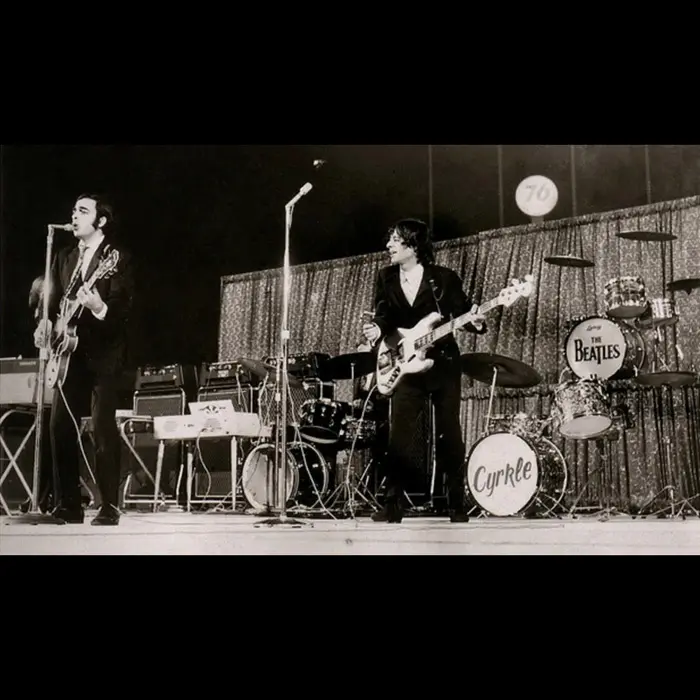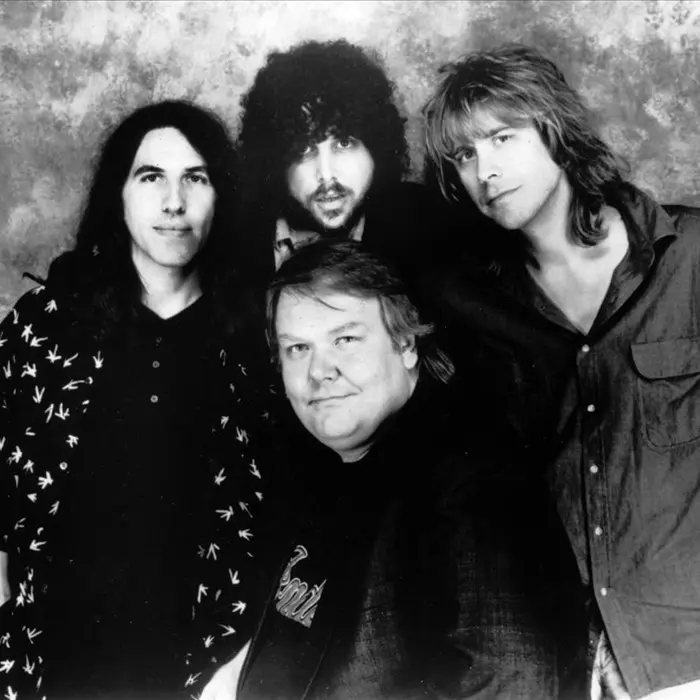The Wildweeds

In the mid-1960s, New England was drenched in garage bands formed by teens who were swept up in the nor’easter called “rock ‘n’ roll,” a storm most in the big-band generation wrote off as a squall. Inspired by Elvis’ debut on The Ed Sullivan Show in 1956 and The Beatles’ in 1964, nearly every adolescent who could hold a guitar – even if they could barely play, let alone tune one – had dreams of surfing the top-40 tsunami.
And among that hoard of harmonizing hopefuls were The Wildweeds who, unlike the gaggle of groups that drowned in the depths of oblivion before recording even a single note, made a noteworthy contribution to New England’s musical lexicon with a song that cracked the Billboard Hot 100. And they certainly knew how to play and tune their guitars, as anyone familiar with frontman Al Anderson’s six-string skills will attest.
Formation, Lineup, Influences
The quintet, all Connecticut natives in their late teens, formed in 1966 in Windsor, about 10 miles from a city with a thriving rock scene, Hartford, that included home-grown bands like The Shags, The Blues Messengers, The Moderns, The Futuras, The Bluebeats and The Six Packs, the last of which became The Wildweeds.
The original lineup consisted of lead guitarist Anderson, keyboardist Ray Zeiner, bassist Bob Dudek, percussionist Martin “Skip” Yakaitis and drummer Andy Lepak whose father, the head percussionist of the Hartford Symphony Orchestra, managed the group. While everyone pitched in on vocals, Anderson sang most of the leads in the booming growl/bark for which he became – and remains – famous.
With a gritty, scorching sound influenced by soul masters including Ray Charles, Jackie Wilson, Otis Redding, The Impressions and Billy Stewart, “the Weeds,” as they were known, differentiated themselves from the majority of garage bands of the era by not falling in lockstep with the styles of Chuck Berry, The Beatles and The Rolling Stones, and were most often compared to The Young Rascals and The Animals.
First Demos, Thomas “Doc” Cavalier, “No Good to Cry”
In 1966, having established a loyal local fanbase through regular high school and college gigs, the Weeds cut several demo tracks at Syncron Sound Studios in Wallingford – a microphone manufacturer with a recording division – including “No Good to Cry,” the first song Anderson wrote for the group. Nothing resulted from the demos until later that year when dentist-turned-producer Thomas “Doc” Cavalier – a future behind-the-scenes giant on the local and national music-biz fronts – bought the recording side of Syncron’s business and listened to the tape archives.
Cavalier got “No Good to Cry” into the hands of several local deejays, most consequentially those at leading Hartford station WDRC-FM. By March 1967, the song had become a regional hit, climbing to #1 in Hartford, Boston and Springfield, #2 in New Haven and #6 in Lowell. After the group landed a manufacturing/distribution deal with Chess Records sublabel Cadet, the song became a smash outside New England – from Raleigh, North Carolina (#4) to Sioux Falls, South Dakota (#3) and as far west as Vancouver, BC (#7) – and in June it spent a week at #88 in the Billboard Hot 100.
Opening Spots, Other Singles
Now the most in-demand new act out of Connecticut, the band spent the rest of 1967 headlining small venues and opening for major acts at larger ones, including The Doors at the Oakdale Theatre in Wallingford and The Young Rascals and The Turtles at the Commodore Ballroom in Lowell.
Cadet released three additional Weeds singles, none of which charted outside Connecticut and Massachusetts: “Someday Morning” in September (#7 in New Haven, #12 in Hartford), “It Was Fun (While It Lasted)” in December (#7 in Springfield, #11 in New Haven) and, in the spring of 1968, the psychedelia-infused “I’m Dreaming” (#7 in Waterbury, #10 in Hartford), a significant departure from the sound of the previous singles.
Wildweeds, Disbanding
With the balloon of national notice now burst, the original lineup split by the end of 1969 but Anderson assembled a new one and recorded Wildweeds, a 15-track LP with 13 Anderson-penned originals and two covers, released in 1970 by Vanguard.
Produced by Vanguard co-founder Maynard Solomon and recorded at Bradley’s Barn in Mt. Juliet, Tennessee, and Vanguard’s 23rd Street Studio in New York, the band included famed Nashville session cats Weldon Myrick (steel guitar), Charlie McCoy (organ, vibraphone, dobro, harmonica) and David Briggs (piano) along with guitarist Mac Gayden, guitarist/bassist Jim Colvard and bassist Al Lepak, Jr. and original Wildweeds Dudek and Yakaitis on drums and percussion, respectively.
A harbinger of Anderson’s future roots and country direction, the album was largely ignored, with critic Richie Unterberger dismissing it as ”fair but non-eyebrow-raising country-rock” while praising Anderson’s gruff vocals, particularly on the tracks “And When She Smiles” and “Belle.”
In 1971, Anderson disbanded the group to begin his 22-year run as lead guitarist, vocalist and chief songwriter for roots-rock rebels NRBQ before becoming one of the most prolific, chart-topping songsmiths in country-music history and releasing six solo albums.
“No Good to Cry” Covers, Compilations
Also that year, Canadian psychedelic-pop quartet The Poppy Family recorded a toned-down cover of “No Good to Cry” that reached #84 in the Billboard Hot 100 – four spots ahead of The Wildweeds’ original. In 1989, Mercury Records included The Allman Brothers’ rip-roarin’ cover of the song on the compilation Dreams (retitled “Ain’t No Good to Cry” and recorded when the Allman brothers were part of the LA-based R&B group Hour Glass).
In 1988, Club 51 Records released a 25-track compilation of Weeds material, The Wildweeds – Greatest Hits…& More!. A pricey collectors’ item that’s been out of print for decades, it includes most of the band’s Cadet singles, some previously unreleased ones, a live version of “No Good to Cry” (recorded at Windsor High School with The Al Lepak Big Band) and demo tracks Anderson used to land his solo deal with Vanguard. In 1990, Rhino Records included “No Good to Cry” on the album Dick Bartley Presents: One Hit Wonders of the ’60s, Vol. 2.
In 2002, Confidential Recordings released No Good To Cry: The Best of The Wildweeds, an 18-song collection of the band’s recordings from 1967/68 (not the 1970 Vanguard release) that includes ten previously unreleased tracks, including stereo and instrumental versions of “No Good to Cry.” Ranging in style from garage rock and soul to pop and psychedelia, all songs were remastered from the original Syncron tapes and the liner notes recount the band’s history, quoting most of the original members. In 2008, Sundazed Music included “No Good to Cry” on the 22-track collection Don’t Press Your Luck! The In Sound Of 60’s Connecticut.
Post-Wildweeds Activity
Anderson, listed as one of Musician magazine’s “Top 100 Guitarists of the 20th Century” in 1991, has been based in Nashville since the early ‘90s while original Wildweeds drummer Andy Lepak and pianist Ray Zeiner, who continue to perform on their own, live on Long Island and in Connecticut, respectively. In 1988, Weeds percussionist Martin “Skip” Yakaitis passed away, followed in 2002 by bassist Bob Dudek and in 2005 by Thomas “Doc” Cavalier, producer of the band’s best-known songs.
Anderson’s Comments on Success
In a 2018 interview with the Connecticut Press, Anderson reflected on his years with the Weeds and the sudden success of what became their signature song.
”[We played mostly high] schools and college gigs around the state. Actually, back then it was a big deal to be asked to perform anywhere,” he said. “So few local records ever got into the top 10 and with ‘No Good to Cry’ – thanks to WDRC’s Bertha Porter, who made the decisions – it got good radio play in 1967. People were calling the station so much for the song that the deejays asked everyone to stop calling.”
“I was in high school when I wrote that song and it became a hit for the group,” he added. “We were kids. One night we were going to McDonald’s to hang out and the next night we were stars.”
(by D.S. Monahan)















